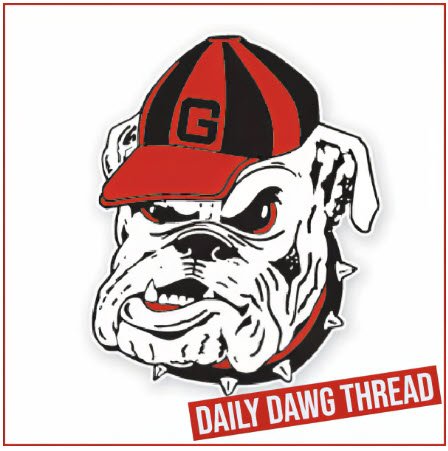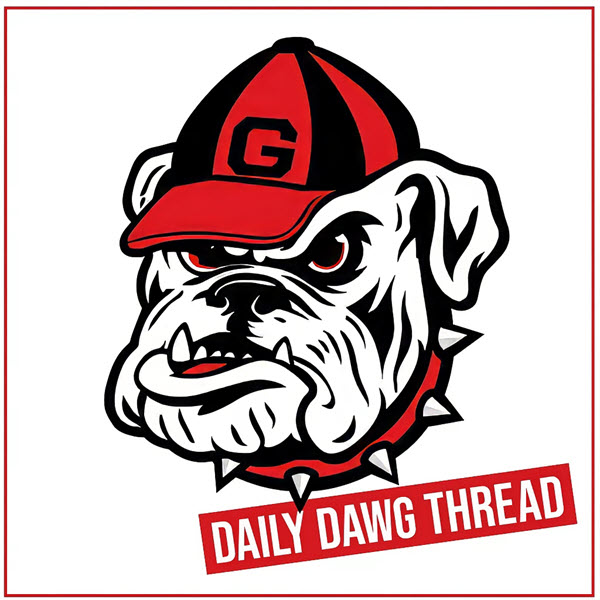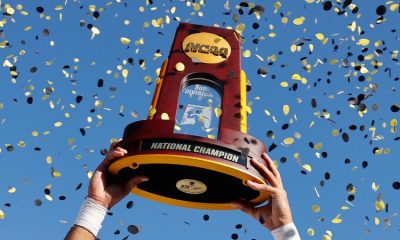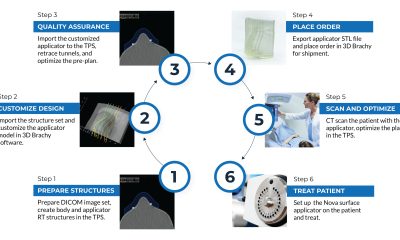Joel Klatt
Lead College Football Analyst
There aren’t many things I’m more passionate about than the College Football Playoff. As discussions about expanding the playoff field continue, I’ve drawn my line in the sand on what should be done to help preserve the greatness of our sport.
So, I decided to meet up with Big Ten commissioner Tony Petitti in New York City recently and find out where his mind is at in playoff expansion talks for the most recent episode of “Big Noon Conversations.” Petitti, along with SEC commissioner Greg Sankey, are among the two major power brokers in the CFP expansion discussion as several ideas have been thrown out there about expanding to 14 or 16 teams.
Here are some highlights from my conversation with Petitti.
Parts of this interview were edited for clarity and brevity.
Klatt: As the commissioner of the Big Ten, what are your objectives for the future of the CFP and its format?
Petitti: The first thing is, it goes right back to representing the Big Ten, because that’s my job. There isn’t a commissioner of college football, like you pointed out. So each of us, when we get in that room, we are looking at trying to work together to come to the right solution for all of us. But ultimately, my job is to represent the 18 institutions in the Big Ten — our football, our coaches, our players, the way we do things.
We start from a place where we’re not always going to be aligned. There might be different ideas in different conferences. We have an obligation to try to come together, to work these things out. But the goal for me, right from the beginning, I really felt strongly about this, and maybe it’s my experience coming from MLB, I really believe that you’ve got to have a postseason format that makes the regular season better. I want more teams to feel like they’re chasing that opportunity to compete for a national championship. Teams can get hot late in the season. The fact that they lose a game early shouldn’t disqualify them, those types of things.
So, to play more meaningful conference games as late as possible. I think you see that in the professional sports model — they try to keep as many teams alive for as long as possible, especially when you get into a world when you condition fans to think about this great new playoff that we’ve created, they’re going to focus on achieving that. The extent that teams don’t have the opportunity to get there, it’s going to eventually hurt. We want to make sure we have the interest, that teams can break through, have a remarkable season, qualify and play. We just believe strongly that conference record is the backbone of all of that — how you play during the season, qualify off your conference record. That’s sort of the best way we believe.
So, if I could boil it down, your main objective would be to keep more teams relevant in the season and playing meaningful games later in the year?
That’s right. … I look at Ohio State last year. Ohio State lost two Big Ten conference games. Technically, they finished fourth in the conference at 7-2, and were clearly, by the end of the playoff run, the best team in the country. I think it’s an indication of why it’s hard to figure this stuff out during the course of a season.
One thing I’ll also say that’s really important is, within the Big Ten, you have 17 available opponents. You play nine of them. Even within a schedule, there are discrepancies in the strength of schedule. You just don’t know who’s going to be strong and who’s not when you play them, the rub of that luck of the schedule or when you play teams, who is healthy when you play them.
The idea we’ve had about playing play-in games is a way to sort of accommodate the fact that we’re not playing that much of a common schedule, even within the league, let alone trying to be compared to the SEC, Big 12 and ACC. The idea of having a championship game with those two teams in, and then playing our sixth-seeded team vs. our third [seed] and our fifth [seed] vs. our fourth [seed], which is the idea we’ve been talking about. I think it’s just a way to also normalize your conference schedule. It really is hard to sometimes tell the difference between our own teams, because a lot of times they don’t play each other.

Ohio State won all four of its CFP games by double digits after losing its final game of the regular season. (Photo by Rich von Biberstein/Icon Sportswire via Getty Images)
I’ve got four criteria that I think need to be hit for the reformatting of the CFP. I love yours and mine fits in with one of yours. I think we need to increase fan base engagement and increase the valuable or meaningful games that we play —
Encourage them.
That’s right. I think we need to minimize the power of the committee and I think we need to maintain more conferences being relevant. What you have put forth is a 16-team playoff with a 4-4-2-2-1-3 — four automatic bids for the Big Ten, four automatic bids for the SEC, two automatic bids for the ACC, two automatic bids for the Big 12, three at-large bids and one for the Group of 5. Why that model?
I understand there was controversy about how many AQs (automatic qualifiers) one league gets or another. Let’s put that aside for now. I think we’re trying to focus on, at least within the Big Ten, we’re not asking to be handed anything. We’re playing non-conference games. We want to play tough play-in games to get there, and we want to create an incentive for our schools to schedule more non-conference, because if you’re qualifying off your conference record —
So, you’re trying to build a system that creates tougher games?
Yeah, I want to play more. I think, theoretically, the goal is to play more non-conference games, because if you’re qualifying for the CFP off your conference record and then a play-in game, the fact that you play a tough SEC or ACC or Big 12 team and maybe get beat on the road, whatever the result is, that might impact your seeding down the road, but it’s not going to impact your access. There are three at-larges, so it does a little bit. But at the end of the day, that loss isn’t fatal. You can finish 7-2 in the Big Ten, like Ohio State, and if you lost a non-conference game with a 9-3 record, they’re in the tournament because a 7-2 record is almost certainly going to get you into a play-in game in the Big Ten.
As great as college football is, and it’s great, there’s just more on the table we can do. I think fans want to see these non-conference games early in the season. I think we can do more of it. Everybody’s pointing to that Texas-Ohio State game, which is going to get tremendous attention. We want more of that. We want to incentivize that and not create a sense of, “Does winning that game help you more or does losing that game hurt you more?” That’s what coaches and ADs are going to be faced with.
I don’t understand how you compare 10-win teams in one league to a nine-win team in another; that nine-win team could clearly be better. I just think it’s very, very difficult. Mainly, getting back to what I suggested, there isn’t much head-to-head, and there really isn’t a lot of crossover, at least in our league, because we play non-conference games, we don’t play that many games against the SEC. I’d like to actually play more, because I think it’s just better for fans.

These are two of the proposed models for the CFP if it expands to 16 teams.
So, I agree with you overall. Now, there are some things that I will maybe disagree with. The baseline should be building a system that goes from a selection-based model to an access-based model. We should be trying to minimize the committee. We should be trying to create a defined path and access to the College Football Playoff, which then would create not only more meaningful games, but more fan bases engaged deep into the season.
Now, one of the things that everyone immediately points out is then, well, why do you get four automatic spots and the ACC and the Big 12 only get two?
We’ve made a decision about what we think is appropriate for us and what you should have on the at-large side, and it’s based on historic strength and where we think programs are. Are there other ideas that we would consider? I think we’ve been pretty open, and we just communicated this in a recent meeting we had. We’re open to ideas.
I just think ultimately, it’s going to be very hard to sort of figure out how you expand the field, because the alternative to this system is expanding the field and giving the committee more to do. If you go to 16 and you have 11 at large, you’ve just added even more decision-making. The answer is, “Well, at that point it gets to be easy, because you’ll cover everybody.” No, the more spots you put into the system, the more difficult decisions you’re facing. Teams start to look more alike.
We’re looking to kind of do exactly what you said, which is to reduce the role of the committee. Let them focus on seeding and the last three at-large spots. If everybody’s playing play-in games, I don’t want to speak for the ACC, Big 12 or SEC about how they would qualify in an AQ world, but we’ve done some modeling that you could have somewhere between 40 and 50 teams after Week 13 that are either in the play-in position or one game back. That’s a lot of teams still alive. Some of them might be less realistic chances than others, but they’re all sort of playing and you don’t want to get into that mode where you lost that third game and you’re not [in it]. I worry that, as the CFP gets better and better, missing it and where you go after that gets to be harder.
Was there any argument or reason or data point given in the recent meetings that convinced you at all that the 5+11 model (one automatic qualifier from the ACC, Big Ten, Big 12, SEC and Group of 5; 11 at-large bids) might be feasible?
We’ve been a proponent for a certain system for about a year now, and obviously, we want to hear other ideas if they are out there. We’ll study everything that’s sent our way. If we need independent help to evaluate it, we’ll go get it. I just haven’t seen anything yet, and then communicating back. And it’s not me. It’s not my voice. It’s the voice of the Big Ten. It’s 18 athletic directors and coaches who have to be convinced that this is fair to expand. That’s where we are. Is there something that shows that the metrics can be applied? We haven’t heard anything yet. It doesn’t mean that someone won’t suggest something.
We think bigger is better. I think 12 is not enough teams given the size of the teams that are competing. You look at professional leagues, they go somewhere between 40% and 50% of their teams qualifying for the postseason. We’re way below that, even at 16. I think we want to be really careful. We want to be open-minded. I think we come in — skeptical might be the word. Like, how are you going to make something back? When I talk to Warde Manuel, the AD at Michigan who was the chair of the committee, when I talked with him about, “Hey, did you feel like you didn’t have enough?” That’s not what I get back. I don’t get back from him, “Hey, if only we had more data, we could do this even better.” It’s not that. It’s like, “We have a lot already.”
At the end of the day, you’re making comparisons, you’re bunching teams together, and you’re making a decision collectively with a bunch of other people who were working really hard. That’s different than winning a game 31-27 on the field.

The 5+11 model is one of the formats being proposed for the 16-team CFP expansion.
If I were in the room, I would say 14 is better than 16 because 16 is redundant. It’s a safety that’s unnecessary because you’d have that play-in weekend. Is it redundant to have the three at-large spots?
I think it does a couple of things. One, it does protect a third-place team in the Big Ten who lost one game and gets caught at home in a close game and loses to have one more opportunity to get in. You’re right. You want to call that redundant, it’s definitely a safety net to get one more chance at it.
But I think it does something else that you talked about before. It increases the chance of others from outside the A4 (ACC, Big Ten, Big 12, SEC) to get in, if you have more at-larges.
I think the 16[-team model] that we’ve heard about is playing some games early, like a 16-13, 15-14 weekend, and then preserving the bye. One of the things that I really liked about 14 is rewarding two teams with byes. If you can find a format with 16 that still does that — this way, when we’re all playing these conference championship games, if that’s what we end up doing, there’s really a lot at stake there.
I think having the catch-all may be a safety net everybody wants. I get back to the total number 16. I was originally like you. I was really more focused on 14. But then when talking to the guys about the opportunity to come, it does provide some opportunities outside of the A4 to have a couple more bites at the apple.
You said you’d be open to adjusting your 16-team model. One of the ideas is a 4-4-2.5-2.5-1-2 model, where there are basically five spots allotted between the ACC and Big 12. I’ve spoken with those commissioners, specifically Big 12 commissioner Brett Yormark, and he said it’s just a tough pill to swallow, to say, “Hey, you’re going to get half the spots that we get.” Would you be open to a 2.5 model?
I’ve read about it, but I want to be fair and be open-minded and not kind of preordain anything because it hasn’t been presented. I haven’t seen any real substantive conversation about that model. So I don’t really know.
The right way to do this is to make sure that you know every league is there. There are still three at-large [bids in the 4-4-2-2-1-3 model]. There’s an opportunity to get more than two, and there’s an opportunity for us to get more than four potentially. That’s another reason when you ask me, “Why 16?” It does help with that initial thing.
Depending on where you sit, there are many people who will hate this. We’ve seen it and I understand why. It’s the idea we’re starting from something different. I do push back when people say you aren’t earning your spots. I think we’re earning our spots, playing nine tough games and going through a really tough play-in. I think that’s earning your spot.

Tony Petitti is entering his third academic year as the Big Ten commissioner, holding one of the most powerful positions in college sports. (Photo by James Black/Icon Sportswire via Getty Images)
I love Notre Dame and Notre Dame is great for the sport. Yet, there are always these carve-outs for them and specifically for the playoff as it expands. What do we do with Notre Dame?
We’ve all agreed that they should have their path to access. I don’t think anybody’s suggesting that we change that for them. That’s not something that they’d be obligated to do. No matter what the format change is, the Big Ten and SEC have to come together and make a suggestion, and then the others weigh in. We take that feedback, decide what we want to incorporate. But there are certain parameters that are guaranteed, like, we can’t come up with a format that says the conference champions aren’t in. That’s not what we agreed to. Even with the discretion that we have together with the SEC, there are parameters that we agree to on certain things. And part of that is Notre Dame’s access, and I’m fine with that.
Do you see yourself or any of the institutions you represent agreeing to a 5+11 model at any point?
It’s way too early because we haven’t even seen a proposal of what it would be. We haven’t seen some key things: How many conference games is everybody playing? We haven’t seen what the criteria [is for] the committee.
If you’re going to increase the role of a selection committee, I don’t think anybody in the group — whether it’s the ACC, Big 12, SEC or us, believes that you can keep it the same and that you would be OK with that. So I think we’ve got to do work there.
What was your sentiment, and the Big Ten’s sentiment overall, about home games in the playoff? Would you like to see more in the future?
I was fortunate to be at Penn State when they played SMU, and then go that night to Columbus to watch Ohio State play Tennessee. The environments were great. Home games are great. The Tennessee fans traveled. That was some environment. There were a lot of folks on both sides there, and I think that riled up the Ohio State fans that were there.
This is an area where there are a lot of things to balance. There’s the great tradition of the bowl games and staying connected to the bowl games, which is really important. There are also coaches who say, “Wait, I didn’t get a chance to host a game. I was seeded high, but I didn’t get that chance.”
I think one of the things that’ll hopefully correct a little bit of the problems last year is going to the straight seeding. I think that was a really needed change. I think it makes it tough when you’re moving teams up and down a lot of lines based on parameters instead of the real assessment. So that’ll help, but I think more to come and see how this evolves.
But if you do go to 16 [teams], you are playing more campus games because you’ll have more first-round games. So you may not have later-round games, but you’ll have more first-round games [on campus].
Joel Klatt is FOX Sports’ lead college football game analyst and the host of the podcast “The Joel Klatt Show.” Follow him at @joelklatt and subscribe to the “Joel Klatt Show” on YouTube.
Want great stories delivered right to your inbox? Create or log in to your FOX Sports account, follow leagues, teams and players to receive a personalized newsletter daily.

Get more from College Football Follow your favorites to get information about games, news and more


























































